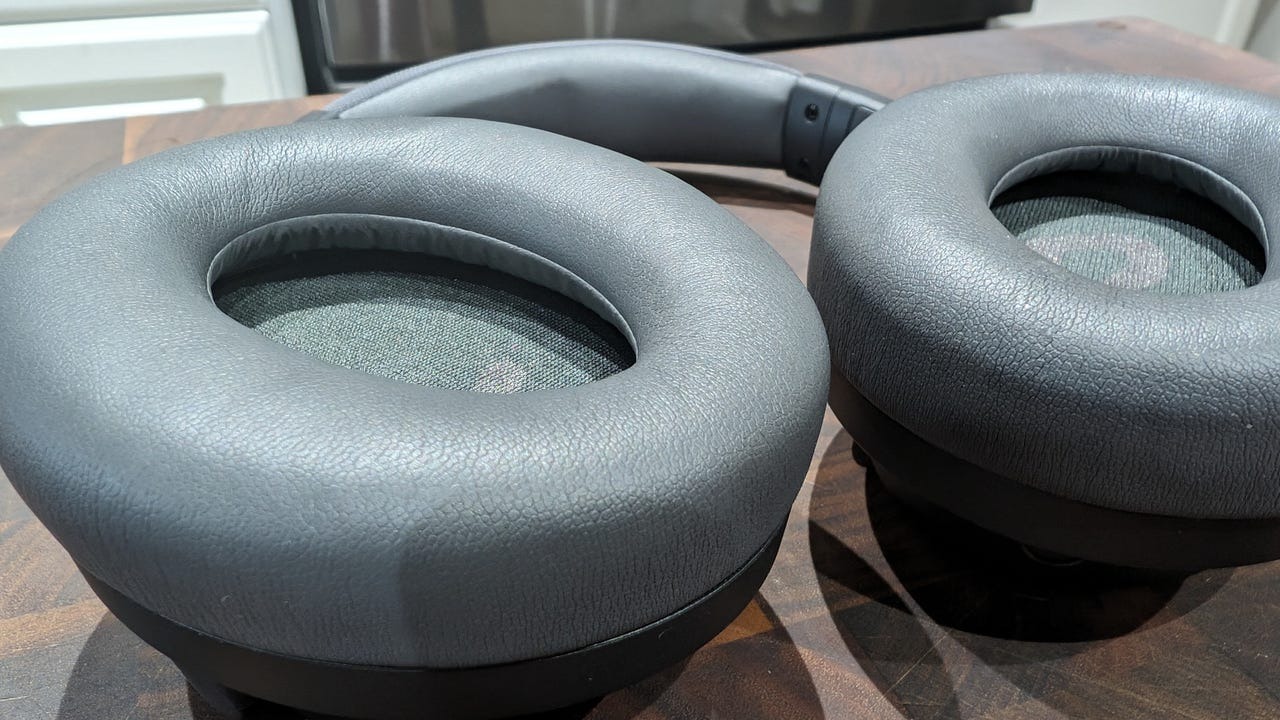Either the market for TWS Headphones has finally slowed down, or manufacturers simply wanted to expand their suite of devices, as I have seen more and more ANC headphones launched by several brands that were not interested in this Segment before.

I’ve seen the TOZO HT2, there’s the Haylou S35, and now we have the SOUNDPEATS place to compete for the title of best budget ANC headphones on the market. Oddly enough, the three pairs of headphones above are not that different, all with 40mm drivers that all rely on ANC and ENC to silence the world when listening to music or calling someone.
But the SOUNDPEATS Space promises a very long battery life, more precisely 123 hours, which is a long time if it’s accurate, and they also seem to be pushing the high resolution certification in front of us. But is this really the cover?
You mentioned that this is the “indoor cable”, so no chance of getting the best Codecs on the market (SBC and AAC are supported) and that means that if you want better audio quality, just use a cable. We know that Bluetooth is not yet good enough to compete with a wired connection, so this makes sense. But let’s just put these headphones to the test and see how well they work.
The quality of construction and design

To keep the price as low as possible, some corners have to be cut, which is usually done at the expense of comfort and control. We have seen this with the TOZO HT2, but is this also the cover with the SOUNDPEATS Space? They did a better job than the vast majority of similarly priced headphones on the market.
The ear pads are not too tight, the sliders move smoothly and the ear pads are quite soft (could have been better). So there are no pressure points on the sides, but what about the headband. There are no pieces of plastic that could prick your head, and I guess the soft side is, well, soft enough. But the manufacturer could have added a little more foam because I could feel a slight pressure on my head. I praised the slider for its smooth movement, but just like the TOZO HT2, it is not entirely made of metal, only on the outside.
And pretty much everything else is made of plastic, following in the footsteps of the Sony WH-1000mx3. On the other hand, it should be easy to 3D print a spare part if a part should break in the future. Is it possible to change the cushions when they are worn out? I could remove the ear pads, but the foam section is glued to the plastic part, which limits the possibilities of replacement a little. I noticed that SoundPEATS comes with a dual microphone per earpiece system.
One is at the top, hidden by the hinge, and the other at the bottom under a faux metal cover – I guess both are used for active noise cancellation. There are a few additional small channels, but they are not for additional microphones, but for both LEDs. The controls consist of physical buttons (no tapping on a capacitive area) and the noise area distributes them between the two earbuds. On the left side is the power button, which also acts as a play/Pause button after a quick click.

If you receive a call, press it once to answer it and hold it down briefly to reject the call. Next to the power button is the volume button, which also serves as the next or previous track when you long press the + or– keys. On the right earbud, SOUNDPEATS has added the ANC button so that the function can be activated with a single press. When you press it again, it switches between ANC, Passthrough and Normal modes.
Also on this page is the USB-C port and I think I should also mention the 3.5mm jack on the left earphone (there is a cable included, but it’s not very long).
Internal hardware and connectivity
The SOUNDPEATS Space are equipped with Jieli’s Jl7018f6 Bluetooth chipset, a brand that I have never heard before, but which seems to be popular among budget headphones and headphones. And yes, we are also dealing with 40mm dynamic drivers. The Bluetooth Version is 5.3 with a range of about 30 feet, taking into account normal interference (like the walls of your house).




